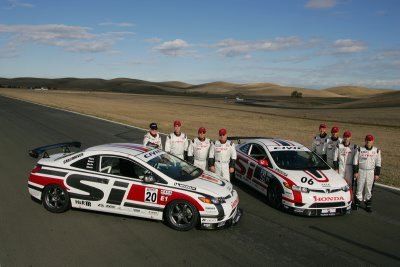Author Archives: Diego Rodriguez
It’s About Storytelling
Dan Pink, author of A Whole New Mind, keeper of the fantastic Orange is the New Pink blog, and a fellow reader of Oprah magazine, has a really cool article in this month’s Wired called Rise of the Neo-Greens. In it he describes the rise of the green aesthetic, whose adherents "…are charting a third way, triangulating between the hippies and the hip." Of course, it’s more about the stories people tell themselves than it is about the actual eco-impact of the offerings they consume. As he notes:
But regardless of age or income, consumers buy cars with gas-electric
engines primarily because of what the vehicles say about them – to
themselves and to everyone else.
If all marketers are liars, then all consumers are believers. That’s not a value judgment so much as it is a insight to guide design work. We live in an age where marketing — the process of deciding what to make — is overlapping with the design process. If you’re only designing the object and not paying attention to the story surrounding it, you’re abdicating your opportunity to craft something that’s truly infectious.
Creating Infectious Action Mini-Conference
We’re holding a mini-conference this coming Thursday, May 4 as part of our Stanford d.school class on Creating Infectious Action. We’re starting at 3:30 and will run until 7pm. Our current speaker lineup is:
- Paul Saffo, IFTF
- Peter Ebert, SAP
- Jamie Shandro, Stanford
- Steve Jurvetson, DFJ
- Paul Moore, Yahoo
- Perry Klebahn, Hasso Plattner Institute of Design
If you’re interested in attending, contact me and I’ll send you more info.
Creating Infectious Action: Spreading Firefox
Wow! We held another session this evening of Creating Infectious Action at the Stanford d.school. And I have to say that my hat was knocked into the creek.
Two weeks ago the six student teams were charged with the assignment of spreading Firefox to a target population of non-consumers. This was not a fictional project. The masterminds from Mozilla were in class the day we assigned the project, and any marketer out there knows how hard it is to go after people who really could care less about using your offering.
So.
Since this is a class taught in a design school, we asked the students to use design thinking to come up with human-centric solutions that will help spread Firefox to audiences not currently using it. Here are some of the solutions — remember, these represent just two weeks of work. Done by people who just met each other and were assigned to teams. And who have lots of other classes to attend to.
In the solution category of making Firefox more accessible by linking it to pop culture:
From the school of tipping-point-maven-connector theory:
Targeting a specific, highly connected, maven-centric psychographic lifestyle segment:
Tapping into the "sheep that shit grass" dynamic:
And, one team of students put together an ambitious and compelling paper-based campaign to promote Firefox adoption in a viral, pass-along way: www.firefoxkids.org
Two weeks. That’s a lot of innovation and discovery.
Organizing for Routine Innovation
When it comes to innovation, it’s sexy to think about how to make disruptive innovation happen, but it’s routine innovation — making
mainstream offerings better for existing users — that brings in the cash that
keeps the lights on. Autoweek recently ran an article about what it feels like to develop new products at Honda. I think it’s a valuable look inside a high-functioning organization designed to serve up innovation on a routine basis.
Here are some of the key things that Honda does to increase the odds of making good cars, year-in, year-out:
- Know how to turn bubble-up ideas into tangible offerings: the Ridgeline wasn’t something that popped out of a strategic planning initiative, but came from passionate people cobbling together a prototype which proved it could be a viable, mainstream offering so that Honda’s decision making process could then allocate the resources needed to get it to market. Many organizations don’t know what to do with good ideas which don’t come out of their strategy group, even if they recognize them as good ideas.
- Make clean, efficient decisions: fly to Japan with a solid business case which points to a proof-of-concept prototype. Make a quick decision. Spend little if any time ever debating or defending that decision again. Focus scarce energy instead on making the Ridgeline or the Civic as good as it can be.
- Practice evidence-based management: when the Civic development team believed in a specific product feature (summer tires instead of all-weather tires), but knew that a senior manager did not value those tires, they were able to put together a case which was not only heard, but allowed to lead to a favorable outcome. This is an example of management relying on evidence and not just opinions to guide decision making. When management forces its opinions even though real marekt evidence exists to the contrary, the odds of creating good stuff really drop.
- Know by doing: as the leader of the Ridgeline project, Gary Flint wasn’t isolated from reality by layers of managers. He lived the details of the project to the point where, as he says in the article, he would even dust the office. If you’re in there dusting, you’re probably also walking around, hearing and seeing the realities of the project. And if you know those, you’ll know the critical things to focus on. Honda has a long culture of knowing by doing, and of putting people in leadership positions who know — really know — the nuts and bolts of the business.
- Solve for happiness: Honda has long believed in creating an environment where people who design, make and market things can be happy. When it comes to innovating on a routine basis, I think the biggest thing an organization can do is set people up to be happy — routinely — as they go about their work.
Think Big
My latest BusinessWeek Online column is now live. It’s titled Think Big, which isn’t a reference to the size of my skull (which is rather large), but to the idea of designing market offerings from a larger point of view which includes — but is not limited to — the surrounding business context.
I wrote it to accompany a story called On the Real Cutting Edge, which looks at the work of ten leading design thinkers across a variety of domains.
Director’s Commentary: Lutz & The Sky

Another example of the Director’s Commentary for design thinkers: Lutz on the Saturn Sky
One could do worse (a lot worse) than to spending a few minutes learning about what makes the Sky tick from The Man.
metacool Thought of the Day
"Prototyping is valuable, and you can prototype almost anything today and make it look real. Once you’ve prototyped your idea, you don’t have to persuade people to like it — they can judge it themselves."
– Seth Godin
Hat in the Creek
I’m normally not one to kiss and tell, but yesterday’s session of Creating Infectious Action really knocked my hat into the creek. It’s a cliche for a teacher to say that they learn from the process of teaching their class, but with this one it’s really true. The intellectual ferment in the room was palpable.
Bob Sutton and I like to say that we’re running the class "Letterman Style", which means that we’re there with a monologue (dialog?) at the start and end of the show, and between those two points it’s all about guests from industry, our illustrious panel of team coaches, and the students.
Leading off was Professor Chip Heath from Stanford, who told us a scintillating story about how to design ideas that stick. Then we had the incredible opportunity to hear Asa Dotzler and John Lilly from Mozilla tell us the story of how they spread Firefox. We’re all figuring out this creating infectious action thing together, and I hope you’ll see the evolution of that idea here and in other places around the web.
More Open Source Marketing
A big part of future marketing efforts will be accomplished using an open-source approach.
See the future today at Firefox Flicks.


